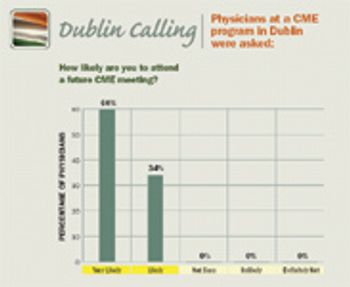
Possible sale of medical nutrition unit would not mark change in business model for the diversified drug maker.

Possible sale of medical nutrition unit would not mark change in business model for the diversified drug maker.

Pfizer's torcetrapib blow shifts cost-cutting measures into overdrive, causing all of industry to reevaluate staffing, marketing spend, and the viability of a potential cardiovascular breakthrough.

Shire markets ADHD patch with unbranded campaign.

In a pitch of holding company vs. separate agencies, IPG nabs top prescription brands from WPP.

Merck branded spots for HPV vaccine use strategic messaging.

BMS is the first on what's bound to be a long list of opponents in the recent ruling on the definition of "average wholesale price."

Genentech says Tanox acquisition does not signal a shift in strategy.

Industry points to new reports on Part D to blunt new Congressional critics.

Advertise in the PharmExec Direct Marketing Edition

Advertise in PharmExec Direct

Need to know the latest on new campaigns, agency-client relationships, and personnel changes? Sign up now to receive the latest drug marketing news, including account wins, case studies, and trends on alternate Wednesdays.



Critics of the pharma industry have gotten good at selective reporting. So good, I've started tuning out. But, with a public official pulling similar punches, my ears can't help but perk up.

June 06 BPA Statement

Merck's Januvia has a head start, but Novartis isn't sitting idle.

An executive interview with Lee Babiss PhD, VP, Preclinical R & D of Hoffmann-La Roche, Inc, conducted by Patrick Clinton, Editor in Chief of Pharmaceutical Executive. Tune in and hear a real-world perspective on drug repositioning as a new way of filling late-stage pipelines.

Drug giant beefs up early-stage R&D, moving into Genentech's turf.

After axing oncology, Gilead says it's ready for new therapeutic areas.

Pharmacists have applauded Plan B's behind-the-counter status, and FDA hints that the drug might pave the way for more pharmacy-only OTC products.

A new, faster recipe for drug development: Chat up regulators. Outsource where you can. And know when to let go.

The recent settlement between branded and generic companies offers a 'win-win' approach to patent challenges.

Company-commissioned report exonerates senior managers, points fingers at sales team

Drug makers used aggressive contracting to retain marketshare after launch of generic simvastatin

Pricing, marketing cases expected to escalate in the future

Pharmaceutical Representative is pleased is pleased to bring you informative, interactive, and cost-effective web seminars. These time-saving events are user friendly and designed to deliver information that will improve your bottom line. Please review the list below for upcoming topics.

It's clear CME is becoming an important part of global healthcare, and there's no better time for pharma companies to capitalize on this growing trend. There's enormous opportunity, but it must be tailored to the distinct clinical environment of each country.

Company faces two Vioxx setbacks in court as it prepares to reveal safety data on its cox-2 successor.

Recent analysis shows partial or complete invalidation of all pharma patents challenged since December 2004.

Schering-Plough's successful allergy medication gets an updated ad campaign.